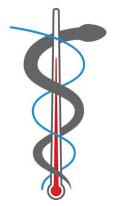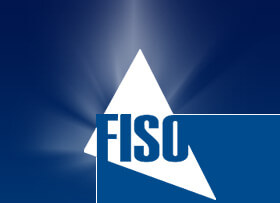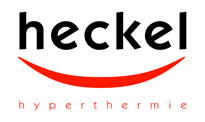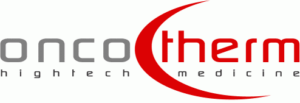ICHO Supporting Societies
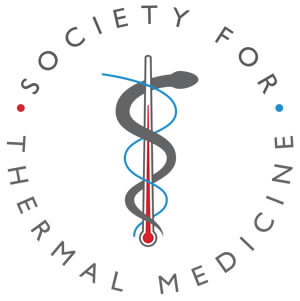
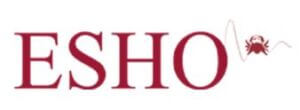
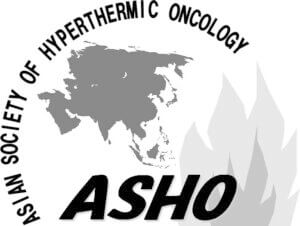
Plenary Lecturers
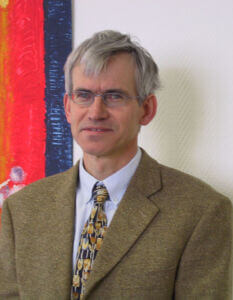
Professor Chrit Moonen, Ph.D.
Chrit Moonen did his Masters in Molecular Sciences and his Ph.D. in biophysics (Wageningen University). He did part of his studies with Nobel Laureate Wüthrich in Zürich, Switzerland. He went for a postdoctoral period to the University of Oxford (Sir Georg Radda). He then worked at the University of California at Davis as a Visiting Research Scientist before becoming head of the NIH In Vivo NMR Research Center from 1987-1996. He moved back to Europe (Bordeaux, France) in 1996 where he has been director of the laboratory "Molecular and Functional Imaging: from Physiology to Therapy" until 2011.

Dr. Damian Dupuy, M.D.
Dr Dupuy, is the director of Tumor Ablation at Rhode Island Hospital and a professor of Diagnostic Imaging at Brown Medical School.
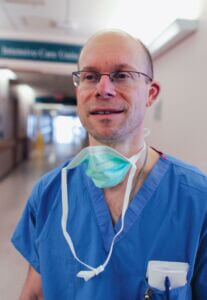
Professor Michael Yaffe, M.D., Ph.D.
President's Symposia Lecturers
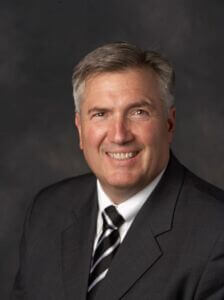
Christopher H. Contag, Ph.D.
Dr. Contag, is a Professor in the Departments of Pediatrics, Radiology and Microbiology & Immunology at Stanford University, and a member of BioX Faculty for interdisciplinary sciences, and Immunology Faculty.
Dr. Contag received his B.S. in Biology from the University of Minnesota, St. Paul in 1982. He received his Ph.D. in Microbiology from the University of Minnesota, Minneapolis in 1988 where he did his dissertation research under the direction of Professors Ashley Haase and Peter Plagemann on the topic of viral infections of the central nervous system. He was a postdoctoral fellow at Stanford University from 1990-1994 in the Department of Microbiology where he studied mother-to-infant transmission of HIV, and then joined the faculty in Pediatrics at Stanford in 1995 with a joint appointment in Microbiology and Immunology and a courtesy appointment in Radiology.
Dr. Contag is the Associate Chief of Neonatal and Developmental Medicine, director of Stanford’s Center for Innovation in In Vivo Imaging (SCI3) and co-director of the Molecular Imaging Program at Stanford (MIPS). Dr. Contag is a pioneer in the field of molecular imaging and is developing imaging approaches aimed at revealing molecular processes in living subjects, including humans, and advancing therapeutic strategies through imaging. His laboratory develops macroscopic and microscopic optical imaging tools and uses imaging to assess tissue responses to stress, reveal immune cell migration patterns, understand stem cell biology and advance biological therapies. He is a founding member, and a past president of the Society for Molecular Imaging, and for his fundamental contributions in imaging, is a recipient of the Achievement Award from the Society for the Molecular Imaging. Dr. Contag is a Fellow of the World Molecular Imaging Society (WMIS) and currently President Elect of WMIS.
The research mission of the Contag laboratory is to develop and use noninvasive imaging tools that can simultaneously reveal the nuances of biological processes and provide an overall picture of disease states for the purpose of developing and refining novel interventions. These imaging tools are sensitive and image over a range of scales from micro- to macroscopic, and are well-suited for the in vivo study of cellular and molecular biology. For the purpose of studying tumor biology in vivo, the Contag group is developing, and using, advanced microscopic tools with the aims of detecting and studying cancer at high resolution in vivo. These approaches use micro-optics to develop miniaturized cofocal microscopes and Raman endoscopes that can reach inside the body to interrogate disease states. This is enabling point-of-care microscopy that is changing the diagnostic paradigm from biopsy and histopathology to in vivo pathology. The opportunity to study tumor margins with arrays of microscopes will enable improved tumor detection and guided resections.
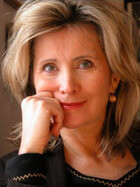
Silvia C. Formenti, M.D., is professor and chairman of the department of radiation oncology at the New York University School of Medicine in New York City. Before joining the NYU faculty in 2000, Dr. Formenti was a tenured associate professor of both Radiation Oncology and Medicine at the University of California School of Medicine in Los Angeles.
Dr. Formenti was born in Milan, Italy, and attended medical school at the Universita degli Studi di Milano. She completed residencies in internal medicine, medical oncology radiology and radiation oncology in Milan, before coming to the United States, where she completed an internship in general medicine and residency in radiation oncology before joining the faculty at USC.
Dr. Formenti has been the principal investigator in many important studies, and has recently received multi-year peer-reviewed grants from the American Cancer Society and the Breast Cancer Research Foundation. Her extensive research interests include developing a new model for the treatment of locally advanced breast cancer by assessing the molecular characteristics of tumors before starting treatment; and studying novel treatment regimens including hormonal treatment, chemotherapy, and radiation.
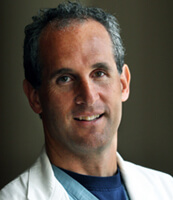
Bradford Wood, M.D.
Bradford Wood, M.D., is Director of the NIH Center for Interventional Oncology, Chief of Interventional Radiology, and a Senior Investigator with Tenure at NIH. He earned both his undergraduate and graduate degrees from The University of Virginia, then completed an Internship in Internal Medicine, followed by Residency in Diagnostic Radiology at Georgetown University, where he was Chief Resident. He then went on to do double fellowships at Massachusetts General Hospital at Harvard in Abdominal Imaging and Intervention and Vascular & Interventional Radiology, and stayed on staff at Massachusetts General Hospital / Harvard after training, and is board-certified in Vascular and Interventional Radiology as well as Diagnostic Radiology.
Dr. Wood has practiced Interventional Radiology at NIH since 1998, when he was recruited from Harvard / Massachusetts General Hospital. He directed the Interventional Radiology Research Lab from 2004 to present, and was Acting Chief of Radiology - Science and Research and Acting Director of the Molecular Imaging Lab from 2006 to 2008. He holds appointments in several NIH institutes, including the NIH Clinical Center and the National Cancer Institute, Urological Oncology Branch, and is credentialed in surgery and radiology. He has received both the Clinical Center Director's Award and the NIH Director's Award, and has published widely in the field of Interventional Radiology and the emerging discipline in Interventional Oncology.
He directs a multidisciplinary team of scientists, students, research nurses, biomedical engineers, computer scientists, chemists, technologists, and physician-scientists within a collaborative environment focused on first in human clinical translational research and development with academic, industry, and government components.
His achievements include All-American in Lacrosse, multiple patents in the field, and pioneering several technologies from the bench to the patient, now in widespread use, including heat deployed chemotherapy combined with thermal ablation for liver cancer, “medical GPS” electromagnetic (EM) tracking for needle-based procedures like biopsy and thermal ablation, and smart needles and devices for minimally invasive, multi-modality, image-guided procedures.
He postulated and implemented bench to bedside Phase I trials of radiofrequency ablation for liver tumors, augmented with heat deployed chemotherapy (heat sensitive liposomal doxorubicin), which is currently post Phase III for hepatocellular carcinoma.
He was among the first physicians to perform radiofrequency ablation for kidney and liver tumors in humans in the mid-1990's, to use ablation devices plus heat-deployed drugs for liver tumors, to guide ablation and biopsy with "GPS-enabled" devices, to combine MRI and ultrasound for fusion guided prostate biopsy, "Medical GPS" fusion-guided ablation and biopsy, and RF ablation for patients with pheochromocytoma, lymphoma, adrenocortical carcinoma, liver abscess, chordoma, and intractable hematuria.
In the 2000's, NIH teams also deployed percutaneous methods for isolated liver perfusion (Chemosaturation) for regional liver therapy. NIH teams have performed over 12,000 needle procedures in over 850 patients with the tracking / fusion technology.
Translational research interests include fusion and navigation tools, minimally-invasive & image-guided tumor ablation tools and treatment planning, drug + device combination therapies, heat deployed nanoparticles activated with needles or ultrasound GPS-enabled medical and surgical devices, image-able drugs (drug eluting beads and liposomes), image-guided robotics, and HIFU for non-invasive ablation or "drug paint-brushing" of chemotherapy.
He is actively involved in the Society of Interventional Radiology and the Radiological Society of North America, and manages numerous government-academic-industry partnerships. He serves on the editorial boards of Interventional Oncology and the Journal of Therapeutic Ultrasound, is on the Board of Directors of the Academy of Radiology Research, and has close collaborations with Duke University, Johns Hopkins University, Harvard / Massachusetts General Hospital, Georgetown University Medical Center, Utrecht Medical Center, Eindhoven University of Technology, Children's National Medical Center, and Innsbruck Medical University. Dr. Wood has been a visiting professor and invited faculty at many institutions around the world.
Title of lecture: Integration of functional imaging with interventional oncology: "Molecular Interventions"

Arlene Leonie Oei, MSc. received her Bachelor degree in Biomedical Sciences at the Free University of Brussels (VUB) in 2011 and obtained her Master degree in Biomedical Sciences at the Radboud University Nijmegen in 2013. During her graduation project, performed at the Laboratory for Experimental Oncology and Radiobiology (LEXOR), Department of Radiation Oncology at the Academic Medical Center (AMC) in Amsterdam, Arlene studied the effect of the combinational treatment of hyperthermia, radiotherapy, cisplatin and PARP1-inhibitors. This aroused her interest in hyperthermia and she continued her work as a PhD student at the AMC. Her main research interest is to unravel the underlying mechanisms how hyperthermia and other agents sensitize tumor cells to radiotherapy. Furthermore, she is investigating the optimal treatment scheme for the combinational treatment of hyperthermia and radiotherapy. Her work has resulted in publications on the impact of hyperthermia on DNA repair pathways and HPV-positive cervical cancer cell lines. Arlene has been a recipient of several awards, such as the Best Poster Award at the OOA retreat in Renesse (2013), the Best Poster Award at the 40th Annual Meeting of the ERRS in Dublin (2013), the New Investigator Travel Award at the 31st Annual Meeting of the STM meeting in Minneapolis (2014) and the Young Investigator Award at the 30th Annual Meeting of the ESHO in Zürich (2015) and the Klaas Breur Travel Grant at the Spring Meeting of the NVRB in Utrecht (2015).
Title of lecture: How hyperthermia works. How can we make hyperthermia work better?
2016 International Congress of Hyperthermic Oncology
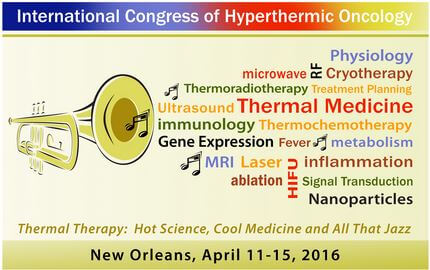
I am pleased to announce that travel grants will be provided for up to 20 young investigators. The abstracts for young investigators will be judged and the top 20 will be selected for the ICHO travel award. Application criteria can be found HERE.
I look forward to seeing you in New Orleans!
- Mark W. Dewhirst, DVM, PhD, FASTRO, FAAAS
12th ICHO President
ICHO Sponsors
Diamond Sponsor
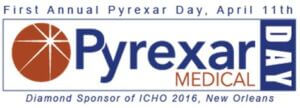
Platinum Sponsor
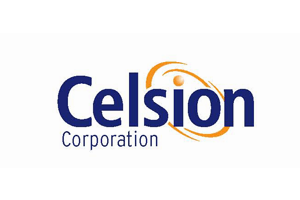
Gold Sponsor

Silver Sponsors
Sustaining Sponsors
Bronze Sponsors
Friends Sponsors

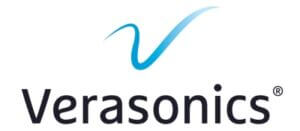
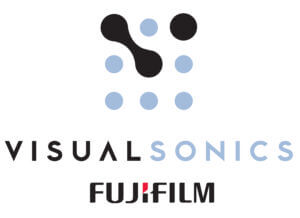

Supporting Sponsors
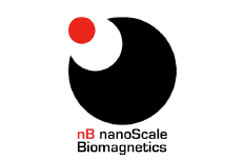

2016 ICHO Award Winners
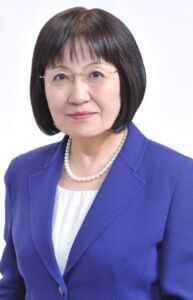
- 2016 Tsudomu Sugahara Award Winner -
Kansai Medical University, Japan
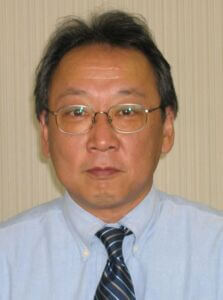
Hideki Matsumoto, PhD
Department of Experimental Radiology & Health Physics,
Faculty of Medical Science, University of Fukui, Japan
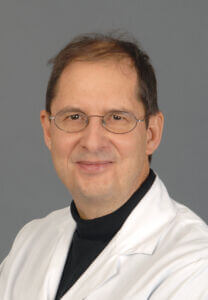
- 2016 ESHO/BSD Award Winner -
Stephan Bodis, Prof. Dr. med.
Canton Hospitals Aarau (KSA) and Baden (KSB), University Hospital Zurich (USZ)

- 2016 STM J. Eugene Robinson Award Winner -
Zeljko Vujaskovic, MD, PhD
Professor and Director
Division of Translational Radiation Sciences
Department of Radiation Oncology
University of Maryland Baltimore
12th ICHO President
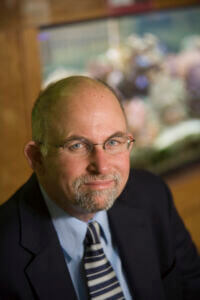
Mark W. Dewhirst,
DVM, PhD, FASTRO, FAAAS
Duke University Medical Center
Department of Radiation Oncology
201A MSRB1, Research Drive
Box 3455
Durham, NC 27710
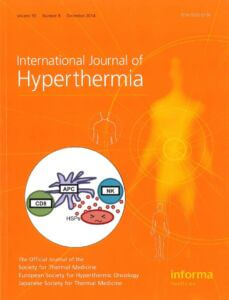
2016 STM/ICHO NEW INVESTIGATOR AWARDS
Matthew Adams
“Development of MR-guided endoluminal ultrasound applicators for thermal ablation of pancreatic cancer: design and evaluations in ex vivo and in vivo porcine studies”
University of California, San Francisco, San Francisco, USA
Bassim Aklan
“Hyperthermia treatment planning: Impact of variation in manual tissue-segmentation on the simulated temperature distribution”
Radiation Oncology, University Hospital Erlangen, Erlangen, Germany
Kathleen Ashcraft
“Enhanced efficacy of radiotherapy by voluntary exercise is dependent on a thermoneutral environment”
Duke University, Durham, North Carolina, USA
Akke Bakker
“Scar tissue is more at risk of developing thermal skin damage in recurrent breast cancer patients treated with reirradiation and hyperthermia”
AMC, Amsterdam, The Netherlands
Sarah Brueningk
“A comprehensive model of hyperthermia and radiotherapy induced cell death”
The Institute of Cancer Research, Sutton, Surrey, UK
Mark Bucsek
“The impact of β-adrenergic signaling on radioresistance and anti-tumor immunity in murine tumor models”
Roswell Park Cancer Institute, Buffalo, New York, USA
Tejan Diwanji
“Multidisciplinary Management Of Unresectable Verrucous Carcinoma Of The Genitals, i.e. Buschke-Lowenstein Tumor, With Combined External Beam Radiation and Hyperthermia: A Case Report”
University of Maryland Medical Center, Baltimore, MD, USA
Kalyani Ektate
"Ultrasound monitoring of tumor temperature and drug delivery with echogenic thermosensitive liposomes"
Oklahoma State University, Stillwater, Oklahoma, USA
Samuel Fahrenholtz
“Laser ablation prediction via global optimization and cross-validation”
Department of Imaging Physics, UT MD Anderson Cancer Center, Houston, Texas, USA
Taylor Ibelli
“Photothermal Ablation of Streptococcus pyogenes and Staphylococcus aureus using Fluorescent Bio-Polymer Nanoparticles”
Wake Forest University, Winston-Salem, North Carolina, USA
Paras Jawaid
“Effects of nanoparticles on the cell killing induced by different physical stressors”
Toyama University, Toyama, Japan
Samir Jenkins
“Photothermal Treatment and Radiosensitization of Breast Cancer Cells using Targeted Polydopamine Coated Gold Nanocages”
University of Arkansas for Medical Sciences, Little Rock, AR, USA
Thomas Longo
“HEAT-TARGETED DRUG DELIVERY USING A NOVEL CONDUCTIVE BLADDER HYPERTHERMIA DEVICE”
Duke University Medical Center, Durham, NC, USA
Eleanor McCabe-Lankford
“Near-Infrared Nanoparticle Mediated Hyperthermia In Colorectal Cancer Spheroids: A Tissue Phantom Study”
Wake Forest University School of Medicine, Winston-Salem, NC, USA
Daniel Meeker
“Designing novel antibiotic-loaded, targeted nanoparticles to eradicate Staphylococcus aureus planktonic cultures and biofilms”
University of Arkansas for Medical Sciences, Little Rock, AR, USA
Hendrik Thijmen Mulder
“Optimal path length correction for the Sigma Eye applicator for Hyperthermia Treatment Planning”
Erasmus MC Cancer Institute, Rotterdam, The Netherlands
Rupal Parikh
“Extreme Exotherms using Polyprotic Acids with Polyamines for Thermochemical Ablation”
Rutgers Robert Wood Johnson Medical School, New Brunswick, NJ, USA
Elles Raaijmakers
“An MRI-Compatible Hyperthermia Applicator for Small Animals”
Erasmus MC, Rotterdam, The Netherlands
Mati Ur Rehman
“Cold atmospheric helium plasma (He-CAP) and mild hyperthermia in combination causes enhancement in cell killing mainly via generation of reactive oxygen species”
Department of Radiological Sciences, Graduate School of Medicine and Pharmaceutical Sciences, University of Toyama, Toyama, Japan
Stephanie Rice
“External thermal therapy (ETT) as an adjunct to radiation therapy in the treatment of soft tissue sarcoma”
University of Maryland Department of Radiation Oncology, Baltimore, MD, USA
Dario Rodrigues
“Towards integration of non-invasive temperature measurement with microwave radiometry for improved control of superficial hyperthermia array applicators”
Thomas Jefferson University, Philadelphia, PA, USA
Jan Sebek
“Sensitivity of microwave ablation models to tissue biophysical properties: application to model-based treatment planning”
Kansas State University, Manhattan, Kansas, USA
James Snider, III
“Concurrent Interstitial Thermal Therapy and Interstitial Brachytherapy for Recurrent and Bulky Pelvic Malignancies: A Single Institution Experience”
University of Maryland Medical Center, Baltimore, MD, USA
Frederik Soetaert
“Influence of magnetic nanoparticle location on the survival of SKBR3 cells”
Johns Hopkins University, Baltimore, MD, USA
Stefan Stangl
“Membrane associated Hsp70 as a tumor-specific target structure for theranostic in vivo targeting of a wide variety of malignancies”
Department of Radiation Oncology, Klinikum rechts der Isar, TU München, Munich, Germany
Caspar M. van Leeuwen
“The effect of the time interval between radiotherapy and hyperthermia on treatment outcome in cervical cancer”
Academic Medical Center, Amsterdam, The Netherlands
Joshua VanOsdol
“Targeted intratumoral doxorubicin delivery by ultrasound-imageable low temperature sensitive liposomes and high intensity focused ultrasound mild hyperthermia”
Oklahoma State University, Stillwater, Oklahoma, USA
Chencai Wang
“Heating Efficiency of Colloidal Magnetic Fluids with Nonlinear Loss Properties and Aggregate Formation”
University of California, Los Angeles, Los
